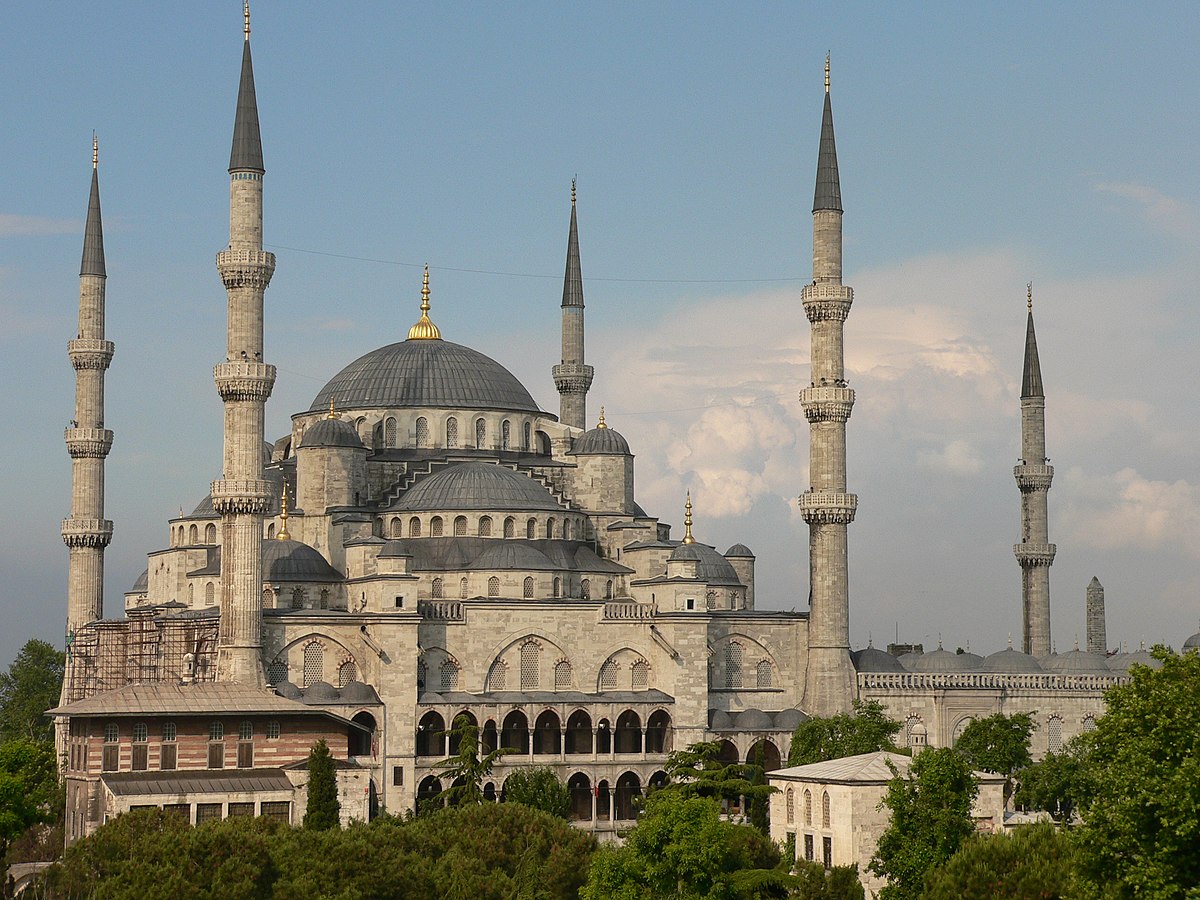The Blue Mosque, also known as Sultan Ahmed Mosque, is one of Istanbul’s most iconic landmarks and a masterpiece of Ottoman architecture. Situated on the historical peninsula, it graces the skyline with its distinctive domes and minarets, earning its nickname from the blue tiles adorning its interior. The mosque is not merely a religious site; it’s a testament to the grandeur of the Ottoman Empire and an enduring symbol of Istanbul’s rich cultural heritage.
Historical Context:
Commissioned by Sultan Ahmed I and designed by the architect Mehmed Aga, construction of the Blue Mosque began in 1609 and was completed in 1616. The mosque was strategically positioned near the Hagia Sophia, showcasing the Ottoman Empire’s architectural prowess while making a statement about its commitment to Islam.
Architectural Splendor:
The Blue Mosque is a striking example of classical Ottoman architecture, incorporating elements of both Byzantine and Islamic traditions. The mosque features a central dome flanked by smaller semi-domes and supported by four massive columns. The exterior is adorned with six slender minarets, a design choice that stirred controversy at the time, as it was traditionally reserved for the Grand Mosque in Mecca. The mosque is surrounded by cascading domes, courtyards, and multiple entrances, creating a harmonious blend of geometric patterns and architectural balance.
Blue Tiles and Interior Design:
The interior of the Blue Mosque is a visual feast, characterized by its blue Iznik tiles, which lend the mosque its colloquial name. The tiles, featuring intricate floral patterns and calligraphy, cover the lower levels of the interior, creating a serene and mesmerizing atmosphere. The central dome, reaching a height of 43 meters (141 feet), is adorned with exquisite paintings, intricate designs, and a cascade of hanging chandeliers.
Mihrab and Minbar:
The mihrab, indicating the direction of Mecca, is an intricately designed niche in the mosque’s wall. It is crafted with fine marble, calligraphy, and floral motifs. Adjacent to the mihrab is the minbar, a pulpit from which the imam delivers the Friday sermon. The minbar is a beautiful example of Ottoman woodwork, featuring delicate carving and geometric patterns.
Courtyard and Surroundings:
The Blue Mosque is surrounded by a spacious courtyard, providing a tranquil space for worshipers and visitors alike. The courtyard is adorned with a central fountain and features a cascade of domes that enhance the mosque’s aesthetic appeal. Beyond the courtyard, the mosque is surrounded by a bustling area with bazaars, markets, and historical sites, creating a vibrant atmosphere that reflects the city’s dynamic character.
Spiritual Significance:
Functioning as a mosque since its construction, the Blue Mosque remains an active religious site. It holds particular significance during Islamic holidays and Friday prayers when worshipers gather to experience the spiritual ambiance within its sacred walls.
Visitor Experience:
The Blue Mosque is open to visitors outside of prayer times, offering a chance to explore its architectural marvels and immerse oneself in its serene atmosphere. Visitors are required to respect the mosque’s sacred nature by dressing modestly, removing shoes, and adhering to any posted guidelines.
Conclusion:
The Blue Mosque is more than an architectural gem; it is a living testament to the grandeur of the Ottoman Empire and the enduring spiritual legacy of Istanbul. Its distinctive silhouette against the cityscape, the intricate designs of its tiles, and the spiritual ambiance within its walls make it a must-visit destination for those exploring the rich cultural tapestry of Istanbul. The Blue Mosque stands as an architectural marvel and a symbol of the city’s unique ability to harmoniously blend tradition and modernity.



